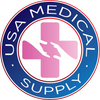Nitrile gloves are popular for their superior strength. These disposable gloves have a high level of dexterity and resistance to punctures, oils, and aqueous chemicals. And because of these qualities, nitrile gloves keep your hands safe from germs, viruses, contamination, and abrasive substances.
Although nitrile gloves are good at what they do best, correctly using them ensures that they serve their purpose well.
Here's how to properly use nitrile gloves.
Do not over-estimate the strength of nitrile gloves.
Although nitrile gloves offer protection against oils and chemicals, and other substances, there are things that they cannot protect you from.
When nitrile comes into contact with highly corrosive or hazardous substances, it offers you minimal protection. Such substances include ketones, aromatic solvents, acetates, concentrated acids, and highly corrosive chemicals. Don't be tempted to use nitrile gloves to protect yourself against these dangerous substances. Otherwise, you may suffer severe injuries and infections.
Get yourself a pair of fitting gloves.
There is that sense of rightness you feel when gloves fit you perfectly. Fitting nitrile gloves give you the perfect level of dexterity; they are neither too tight nor too loose. They are just right, with ample wiggle room to flex your fingers.
To get the perfect size of gloves, test out some samples before settling on one. When you put on the gloves, stretch your fingertips. It is a small fit if the nitrile stretches or punctures or tears. The glove is a bigger size if it is loose-fitting.
A larger-sized or loose-fitting glove reduces your grip and efficiency in movement. You will always pause to readjust the sagging material. On the other hand, very tight gloves leave no room for flexibility. And if you stretch your fingers, you risk tearing or puncturing the material, which could lead to exposure, contamination, and injury of your hands.
Put on your gloves the right way.
Wearing your gloves the right way ensures that you get the highest level of protection that nitrile can offer.
Tip one: Remove watches or other adornments from your wrists/fingers.
Adornments like watches, rings, and bracelets easily tear gloves. Another thing, they can easily contaminate your washed hand and gloves. So as a safety precaution, detach them from your wrists and fingers before cleaning your hands.
Tip two: Wash your hands.
Always wash your hands clean and pat them dry before putting on gloves. This increases the gloves' effectiveness. Clean hands are your first line of protection. On the other hand, dirty hands transfer germs to the gloves. The nitrile also contaminates anything you touch, e.g., food, a patient, and so on.
Also, never place clean gloves on a dirty surface. However much you wash your hands, the damage has already happened.
Tip three: Dry your hands.
It is difficult to wear gloves with wet hands. The moisture makes the surface of the nitrile gloves stick together. To prevent this, completely dry your hands.
Another effective way of neutralizing moisture is by using powdered gloves. The powder absorbs any moisture and makes it easier to wear your nitrile gloves. However, in sectors like healthcare, medical personnel don't use powdered gloves. This is because the powder brings about allergies when exposed to air. And this may have awful consequences on the health of some people. Buy quality nitrile gloves free from powder, silicone oil, esters, and plasticizers.
Tip four: Don't touch the outside of the gloves while putting them on.
Remember, although you are protecting yourself, you are also protecting your patients or the food you are handling. That is why you should take reasonable care when using your gloves.
This is how you should wear your gloves:
Dress up your dominant hand while touching it as little as possible. After doing so, use your dominant hand to dress your other hand quickly. With both hands dressed, flex your fingers and adjust them until they are comfortable in the gloves.
Remove your gloves correctly after use.
Just like when you are putting on the gloves, take care not to touch the outside of the gloves. Why? You may ask. Proper removal of gloves prevents unwanted substances or fluids or chemicals from getting on your skin (prevents contamination of hands).
To remove the gloves, first, peel off the glove from your dominant hand without touching the outside of the glove. Then use your ungloved hand to remove the glove from your other hand.
Wash your hands after removal.
Washing hands with soap rids you of any residual fluid or substances on the outside part of the gloves.
Dispose of used nitrile gloves.
Although resilient against corrosive substances, nitrile gloves become contaminated after use. So, once they have served their purpose, properly dispose of them. When disposing of nitrile gloves, follow the guidelines of the Center for Disease Control (CDC). Proper disposal will prevent cross-contamination.
When used well, nitrile gloves will give you maximum protection from contamination and exposure to harmful substances.Treat yourself and those around you to quality nitrile gloves.

